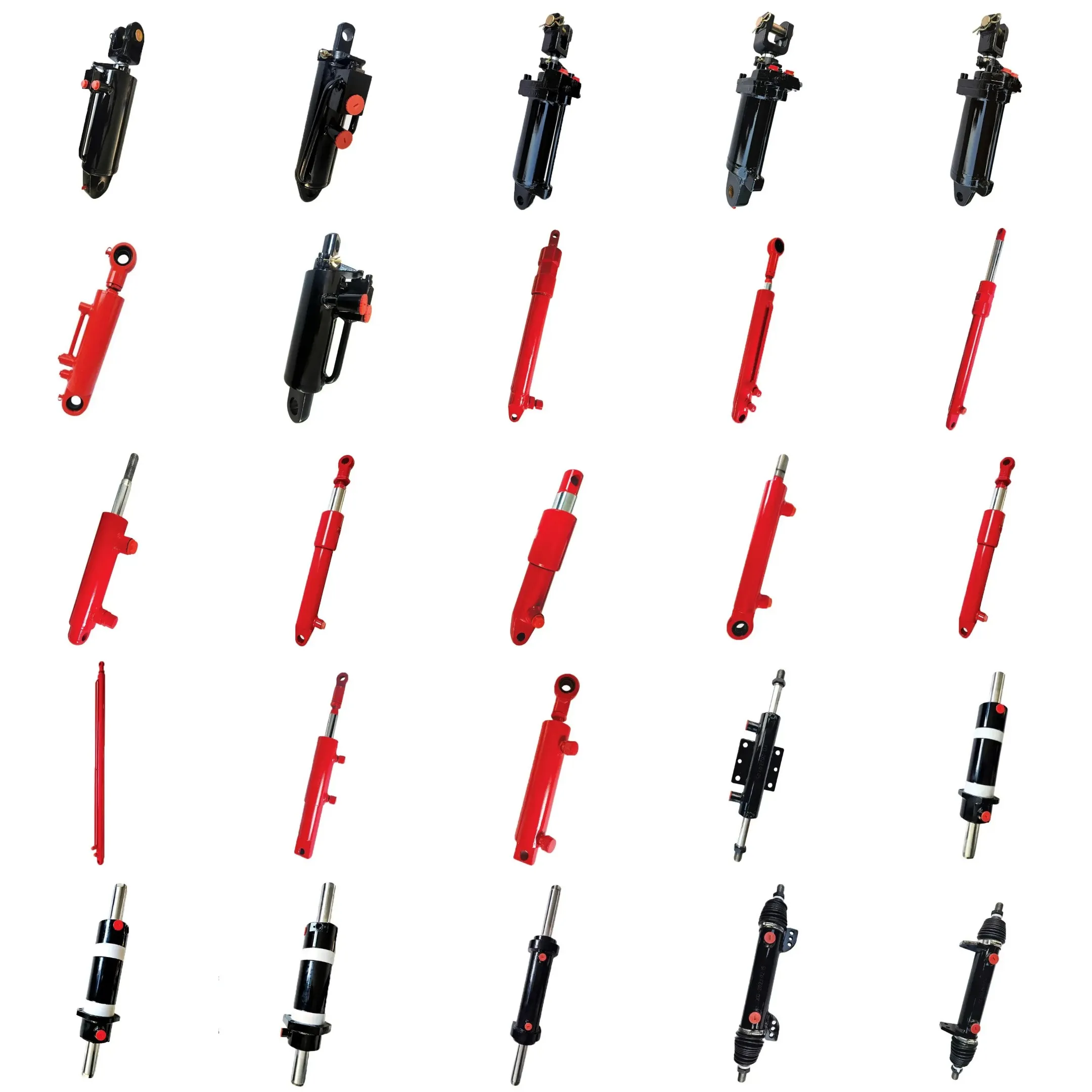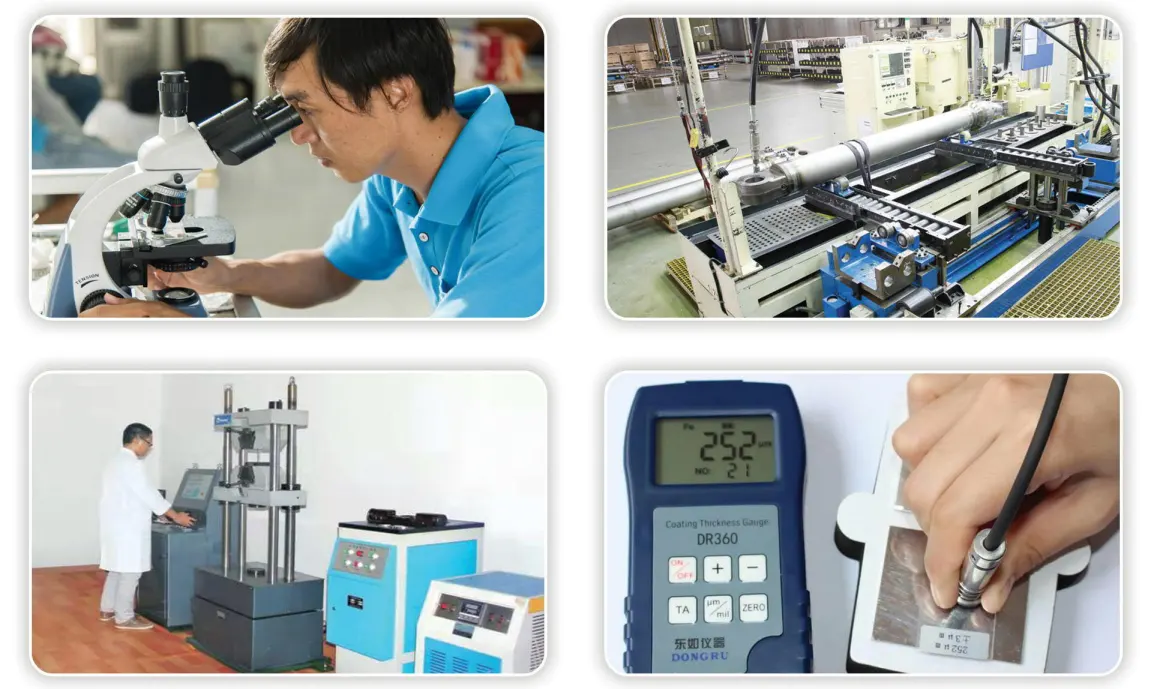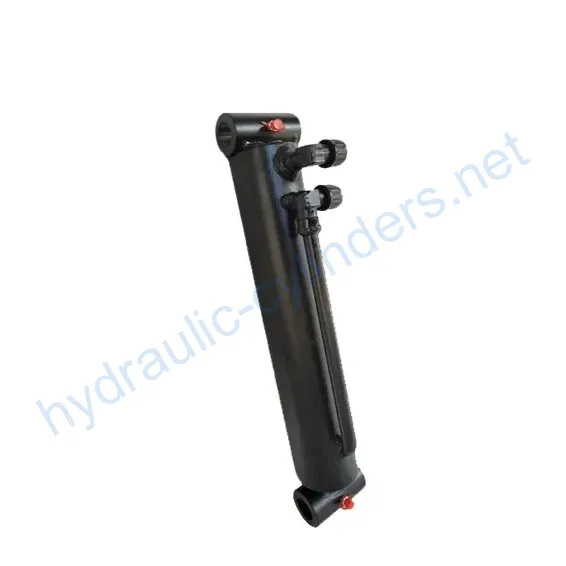D50 Crawler Transport Vehicle Oil Cylinder
Kot eden od proizvajalcev, dobaviteljev in izvoznikov hidravličnih cilindrov ponujamo hidravlične cilindre in številne druge izdelke.
Za podrobnosti se obrnite na nas.
Pošta:sales@hydraulic-cylinders.net
Proizvajalec, dobavitelj in izvoznik hidravličnih cilindrov.
D50 Crawler Transport Vehicle Oil Cylinder
Product Overview
The D50 Crawler Transport Vehicle Oil Cylinder is a critical component in hydraulic systems, specifically designed for use in crawler transport vehicles. This oil cylinder functions as a linear actuator, converting hydraulic energy into mechanical force to enable movement and load-bearing capabilities. With a cylinder diameter of 50mm and a rod diameter of 28mm, it ensures robust performance and reliability in demanding environments. The travel distance of 245mm and installation distance of 365mm make it versatile for various applications, offering the precision needed for effective operation. This product is essential for tasks that require heavy lifting or precise positioning, enhancing the efficiency and productivity of machinery. The hydraulic cylinder is engineered to maintain strength under high pressure while ensuring durability over time, making it a dependable choice for heavy-duty applications.
Product Specifications
Key Parameters
- Cylinder Diameter: 50mm
- Rod Diameter: 28mm
- Travel: 245mm
- Installation Distance: 365mm
Each specification plays a crucial role in the cylinder’s performance. The cylinder diameter influences its strength and load capacity, while the rod diameter impacts the stability and efficiency of force transmission. The travel distance determines how far the cylinder can extend, crucial for achieving the desired movement. The installation distance ensures compatibility with various machinery and ease of integration.
Features of the D50 Oil Cylinder
- High Load Capacity: Engineered to handle substantial weights, making it ideal for heavy lifting.
- Durability: Constructed from high-quality materials to withstand harsh operating conditions.
- Precision Engineering: Designed for accurate positioning and reliable performance.
- Versatile Applications: Suitable for various heavy machinery and industrial uses.
- Custom Manufacturing: We can produce this product tailored to specific requirements, ensuring a perfect fit for your applications.
Applications of the D50 Oil Cylinder
-
Construction Machinery
The D50 oil cylinder is extensively used in construction equipment such as excavators and bulldozers. These machines require reliable hydraulic systems to perform tasks like digging, lifting, and moving heavy materials. The strength and precision of the D50 cylinder enhance the overall efficiency of construction operations, reducing downtime and increasing productivity.
-
Agricultural Equipment
In agriculture, the D50 cylinder is integrated into various machinery, including tractors and harvesters. It aids in tasks such as plowing, lifting loads, and operating attachments. The cylinder??s durability ensures it can withstand the challenging conditions of farming, contributing to effective crop management and operational success.
-
Mining Operations
Mining equipment relies heavily on hydraulic systems for functions like drilling and transporting materials. The D50 oil cylinder offers the necessary force and stability required in such demanding environments, ensuring safe and efficient operations while handling heavy loads.
-
Material Handling
In warehouses and shipping yards, the D50 cylinder is crucial for forklifts and pallet jacks. It enables smooth lifting and transportation of goods, optimizing logistic operations. The cylinder??s precision helps prevent damage to items during handling, which is critical in maintaining inventory integrity.
-
Automotive Industry
In the automotive sector, the D50 cylinder is utilized in assembly lines and vehicle maintenance equipment. It facilitates the lifting and positioning of vehicle parts, enhancing assembly efficiency and safety in repair shops. The reliability of the cylinder ensures that operations run smoothly with minimal interruptions.
Design Considerations and Selection Criteria
-
Load Capacity
The load capacity of the D50 oil cylinder is fundamental to its design. It must be able to handle the maximum anticipated load without compromising safety or performance. Engineers consider factors such as material strength and cylinder dimensions to ensure that the cylinder can perform under high pressure and heavy loads. Proper calculations during the design phase help prevent failures and extend the product’s lifespan.
-
Sealing Integrity
Sealing is critical in hydraulic cylinders to prevent fluid leakage and contamination. The D50 oil cylinder employs high-quality sealing technologies, including piston seals and rod seals, made from durable materials like polyurethane and nitrile rubber. These seals are engineered to withstand extreme pressure and temperature variations, ensuring long-term effectiveness and reliability in hydraulic systems.
-
Durability
The D50 cylinder is designed for durability, with materials and coatings that resist wear and corrosion. This is particularly important in harsh environments where exposure to elements can lead to degradation. Rigorous testing ensures that the cylinder maintains its structural integrity and performance over time, even in demanding applications.
-
Safety Features
Safety is a paramount concern in hydraulic systems. The D50 oil cylinder incorporates several safety features, including pressure relief valves and robust construction to prevent catastrophic failures. Design considerations also include ensuring that all components are properly rated for their intended use, which helps mitigate risks during operation.
-
Maintenance Accessibility
Easy maintenance access is a key design consideration for the D50 cylinder. Features such as removable seals and accessible grease fittings enable regular maintenance and inspection, which are essential for ensuring optimal performance. This design philosophy helps extend the service life of the cylinder and reduces the likelihood of unexpected failures.
Sealing and Lubrication
Sealing and lubrication are crucial for the performance and longevity of the D50 oil cylinder. Various sealing components, including piston seals and rod seals, are selected for their durability and compatibility with hydraulic fluids. Materials such as polyurethane and nitrile rubber are preferred due to their resistance to wear and ability to maintain sealing effectiveness under high pressure.
To enhance durability, the cylinder body and threaded ends undergo precision machining, improving wear resistance and sealing integrity. Regular lubrication with hydraulic oil is essential to ensure smooth operation and prevent wear on moving parts. Appropriate levels of hydraulic oil not only reduce friction but also help to dissipate heat generated during operation, which is vital for maintaining optimal cylinder performance.
Preventive Maintenance Measures
-
Regular Inspections
Routine inspections are vital to ensuring the proper functioning of the D50 oil cylinder. Checking for signs of wear, leaks, or damage allows for early detection of potential issues, preventing costly repairs and downtime. Inspections should be scheduled at regular intervals and should include examining seals, connections, and the overall condition of the cylinder.
-
Proper Lubrication
Maintaining appropriate lubrication levels is essential for the smooth operation of the D50 cylinder. Regularly check hydraulic oil levels and replenish as necessary to ensure that all moving parts are adequately lubricated. This helps to reduce friction, wear, and overheating, ultimately extending the life of the cylinder.
-
Seal Replacement and Calibration Checks
Over time, seals may wear out and require replacement to maintain performance. Regularly scheduled seal replacements prevent leaks and loss of hydraulic fluid, which can compromise system efficiency. Additionally, calibration checks ensure that the cylinder operates within specified parameters, enhancing safety and performance.
Installation Guidelines
Proper installation of the D50 oil cylinder is crucial for its performance and longevity. Begin by ensuring the installation area is clean and free from debris, which could interfere with the cylinder’s operation. Use appropriate mounting brackets to secure the cylinder in place, ensuring it is properly aligned with the hydraulic system.
Before connecting hydraulic lines, verify that all fittings are in good condition and compatible with the cylinder’s specifications. Tighten connections carefully to avoid leaks, and ensure that the hydraulic lines are routed to prevent kinking or abrasion. Once installed, operate the cylinder at low pressure to check for leaks and proper function before full operation. Regularly monitor the installation for any signs of wear or misalignment, addressing any issues promptly to maintain optimal performance.
Common Maintenance Tasks
-
Routine Inspections
Conducting routine inspections is essential for identifying potential issues early. Check for leaks, wear on seals, and the overall condition of the cylinder. Maintaining a log of inspections can help track any recurring problems and assist in preventive maintenance strategies.
-
Appropriate Lubrication
Regular lubrication of the D50 cylinder is vital for reducing friction and wear. Ensure that the correct type of hydraulic oil is used and that levels are maintained. Scheduling lubrication tasks as part of routine maintenance helps to ensure that the cylinder operates smoothly and efficiently.
-
Seal Replacement and Calibration Checks
Replacing seals at regular intervals helps to prevent leaks and maintain hydraulic pressure. Calibration checks ensure the cylinder remains within operational parameters. Following recommended procedures for seal replacement and calibration will enhance the cylinder’s performance and safety.
Safety Considerations and Environmental Factors
Safety measures are paramount when using the D50 oil cylinder. Operators should be trained in safe handling procedures, and proper personal protective equipment (PPE) should be worn during operation and maintenance. Regular safety audits help identify potential risks and ensure compliance with safety standards.
Environmental factors also play a role in the operation of hydraulic cylinders. Operators must ensure that hydraulic fluids are handled properly to prevent spills and leaks, which can harm the environment. Implementing spill prevention measures and proper disposal procedures for hydraulic fluids ensures compliance with environmental regulations and promotes sustainability.
Fault Diagnosis and Common Issues
-
Leakage
Leakage is one of the most common issues encountered with hydraulic cylinders. If fluid is observed around the cylinder, it often indicates seal failure or damage. This can lead to decreased performance and efficiency, so it??s crucial to address leaks promptly by inspecting seals and replacing them if necessary.
-
Reduced Performance
If the D50 oil cylinder shows signs of reduced performance, such as slower movement or difficulty lifting loads, it may be due to low hydraulic fluid levels, air trapped in the system, or seal wear. Diagnosing the root cause requires checking fluid levels, bleeding the system, and inspecting seals for damage.
-
Overheating
Overheating in hydraulic systems can occur due to excessive load, low fluid levels, or inadequate lubrication. If the cylinder becomes too hot to touch, it may be necessary to reduce the load, check fluid levels, and ensure that adequate lubrication is being applied. Monitoring temperature during operations can help prevent this issue.
Troubleshooting Tips and Solutions
To effectively diagnose and resolve issues with the D50 oil cylinder, it??s important to follow systematic troubleshooting methods. When encountering leakage, start by cleaning the area around the seals and inspecting for any signs of wear or damage. If leaks persist after replacing seals, consider the possibility of misalignment or installation issues.
For performance issues, systematically check the hydraulic fluid levels, inspect the system for trapped air, and ensure that all connections are secure. Regular monitoring of cylinder performance during operation will aid in identifying trends that may indicate underlying problems.
Establishing a proactive maintenance schedule that includes regular inspections and timely repairs can significantly minimize the risk of encountering major problems, ensuring the longevity and reliability of the D50 oil cylinder.

About Our Company
We are a leading manufacturer of hydraulic cylinders, offering a comprehensive range of products that cater to both domestic and international markets. Our commitment to quality has established us as a reputable wholesale distributor in the hydraulic industry.
Our expertise extends across several areas, including professional engineering practices, international certifications, and custom manufacturing services tailored to meet specific customer needs. Our state-of-the-art production equipment ensures that we maintain high standards of quality and efficiency in our manufacturing processes.
Moreover, our dedicated after-sales service team is always available to assist clients with any inquiries or issues, ensuring customer satisfaction and fostering long-term partnerships.

Author: lyl
Take a Tour of Our VR Factory:
Take a tour of our VR factory with the following
Hydraulic Cylinder Application:


